In this new monthly series, artist Lone Hansen will be asking fellow creators: “How are you surviving as an artist during this pandemic?” To start it off, Hansen interviewed her good friend, Diane Haddon. Haddon is a mixed media collage and assemblage artist who owned a gallery while living in New Mexico. She currently lives in Suquamish.
Lone first met Diane through a mutual friend, Barbara Burke who is “an incredible, generous supporter of artists.” Lone was helping Barbara care for her dog when she came across a piece by Diane at the back of Barbara’s van. After being told that Diane was showing at Art in the Woods, Lone attended. She saw one of Diane’s painting and “fell in love with it.” Barbara eventually introduced them so that Lone could watch Diane’s dog, Peaches. They quickly became friends. “I never expected to make a new, very good friend at age 79. But it’s wonderful and I feel like I’m getting back to life.”
Here are excerpts from Lone’s extensive conversation with artist, Diane Haddon. Some wording has been revised to provide further clarity.
LH: How can one survive being an artist during this pandemic?
DH: Personally, this has been an opportunity for me in a lot of ways. Most of us artists have a lot of time on our hands and are wondering what to do with it. There’s a feeling that happens for me when I don’t have anything scheduled or a deadline. It puts me in a whole different frame of mind. Where my energy likes to go is doing something in my studio, creating. So, even initially, I saw myself actually painting a lot more. Ideas came to me more easily and [I began] reorganization my studio.
During this time I heard about this abstract artist in New Zealand whose work I’ve been following. She was going to give her very first online class (sort of mixed media). The class was called, “Starts.” It gave me five different ideas of how to start a painting. Because as artists, [for] most of us, that’s the hardest part – coming up with what we want to put down on the canvas or draw or whatever. That was intriguing to me. I got really excited about it, signed up and got my friend Lori (a wonderful abstract artist in New Mexico) to sign up.
LH: What did the class give you?
DH: It gave me some structure and still does. It’s what I needed at this point in time. I feel like I’ve been very productive and have come up with a concept for creating a body of work. I’ve usually created several pieces for a gallery show. Now I’m developing a body of work that I’m pretty happy with. The style is quite different – it’s very free and I’m doing it intuitively, which is not easy for me. It’s really fun because when you’re [being spontaneous] you just let go of a lot of preconceived notions and habits that you’ve had for a few decades and just say: “I can do anything I want”! And then you get back and look at it the next day and think, ha, I really like this!
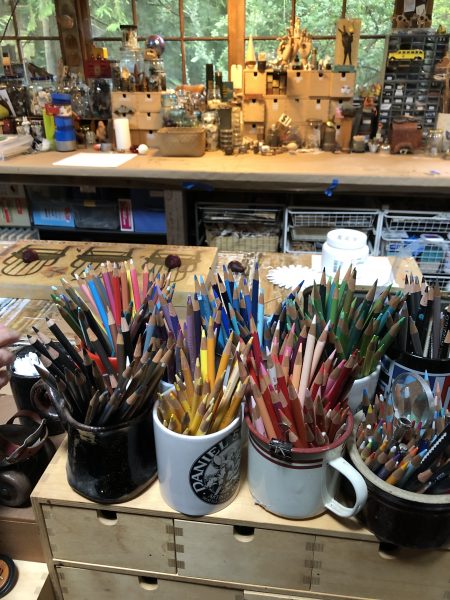

LH: When did you first encounter art?
DH: From grade school to high school I did art here and there. I did the backdrops in the school play, and took pottery and painting classes while making baskets. But then I had a child and did the whole work thing. During that time I had [not] given myself the time and the space to really do something creative.
LH. So have you always been an artist?
DH: I had to work a ‘real’ job – I was in health care administration for a lot of years and I was a single mom for many years. So, that really stifled my creativity – I never really had the time. One of the major stepping stones was when my daughter graduated from high school. I was living in Bellingham and decided to go back to school myself. I enrolled at Seattle Central Community College and did a wonderful two-year program in graphic design. After graduation it was difficult to get a job in a graphic design firm because I wasn’t fluent in the computer programs. So, I ended up working for Daniel Smith Fine Art Materials in Seattle.
LH: Was that a detour? How did it help in your journey as an artist?
DH: I started out in customer service, and then became a buyer. I started collecting art supplies at cost plus 10% while I was there. So, I started stockpiling art supplies. I didn’t know what I was going to do with them but I had all that when I moved to New Mexico.
LH: New Mexico?
DH: I really didn’t start doing my creative artistic [work] until I moved to New Mexico in 1996. Up until that time I had been working. After my mother passed away a few months before, we moved there. I wasn’t intrigued by the Southwest but my partner and I took a vacation down there. After I’d been there a couple of days, that was it. I knew I was supposed to be there. I gave my notice, [put] everything in storage and we headed to New Mexico. We ended up in Abiquiu, which is Georgia O’Keeffe country. We found a place on the Rio Chama river and for the first time in my life I had a studio – this wall of glass that looked out onto the water. It wasn’t a huge space, but it was my space. I had it all set up with the supplies I had stockpiled.
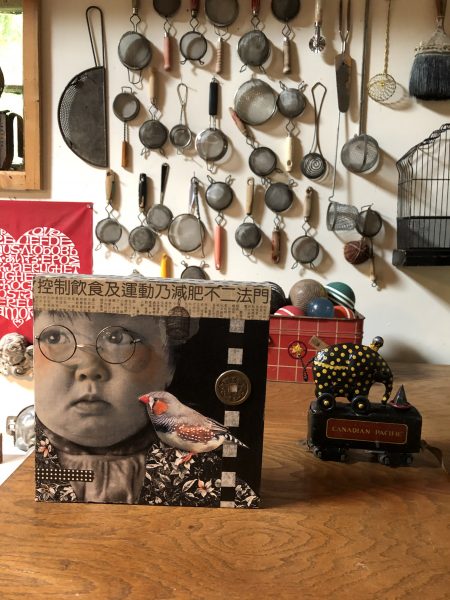
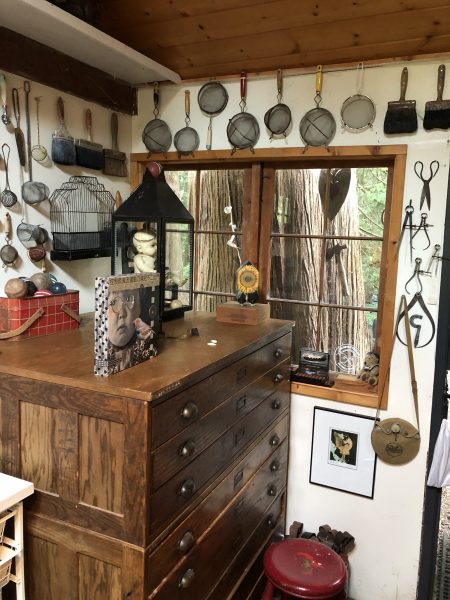
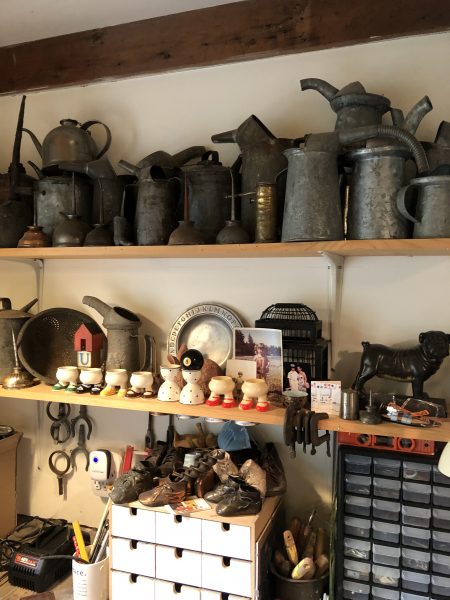
LH: How did you get started?
DH: One day I sat and thought, what are you going to do? I had no idea…with all this paper, and all the supplies I had. So, I started drawing with color pencil. I made a series of large color pencil drawings. I started doing some print making and then I got into the Abiquiu Studio Tour and just started to blossom from there. Just prior to my 50th birthday I had my first show at a gallery. That was significant for me. It wasn’t a solo show but still, it was a show!
LH: Did you sell anything?
DH: I did. By then I was doing more 3-dimensional assemblage pieces. Along with color pencil drawings, I was becoming a multi-media artist. There was this wonderful group of artists in Abiquiu (pop. 1,200 people). It was very romantic and inspirational. At one point I opened a little gallery there for a couple of years and that was a great experience. All these things were stretching me – I had never envisioned it all.
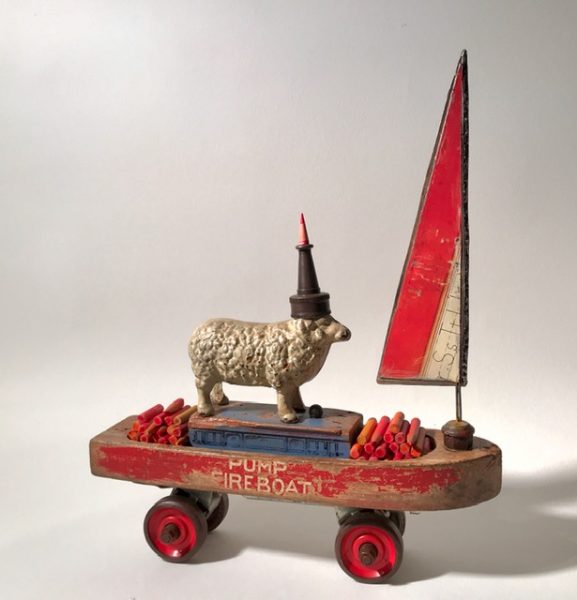
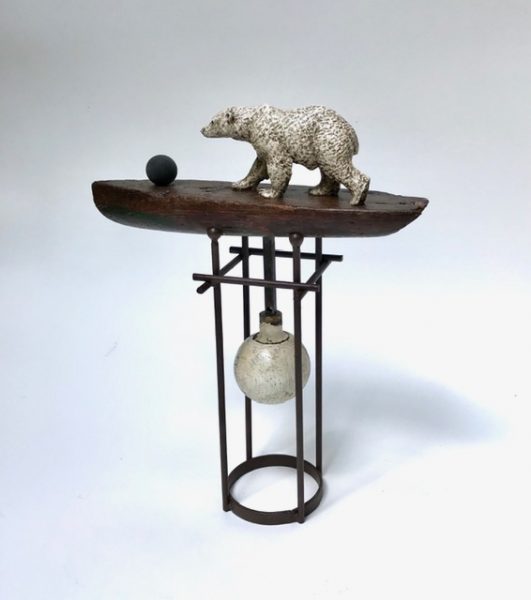
LH: When did you start getting into the assemblage?
DH: I have always been a collector. I’ve always had the collection of the strainer, the oil cans – all these little things that I’d collect. I loved to go to junk stores and antique stores. I didn’t know what an assemblage artist was. But once I got up here [Suquamish] and got my studio set up, I thought, “Now what am I going to do with all this stuff?” I read, The Assemblage Art by Michael deMeng, a well-known assemblage artist. It started very organically. I then had to figure out how to put [the pieces] together. I wasn’t a carpenter, but I got pretty darn good at it. Early on I met Steve Parmelee who is a pretty well-known assemblage guy. We connected immediately. We’d go junkin’ together and if I ever had a problem, he’d either tell me or show me how to do it. [Now] I know all the different kinds of glues. I have to give Steve a lot of credit for that. [The rest] has been a matter of experimentation.
LH: Looking back what do you see? I think it’s amazing and a blessing that you’re able to create because a lot of artists can’t get going. They just can’t.
DH: I knew I wanted to be creative in some way. I just sort of followed whatever interested me. As I look back, I felt like I was being guided. I became more of a believer that as we think, as we believe, that’s where our path goes – if we trust it and allow it to happen and listen to the guidance. Don’t find it. Listen.
LH: What about isolation? Have you felt isolated during this pandemic?
DH: As a single woman some people [assume] you’re isolated and ask, “What are you going to do with yourself?” I don’t look at it that way. I interface with my friends and artist friends as need be. I’m just grateful.
LH: And you have a wonderful sense of humor…
DH: I have a pretty good sense of humor and I think I have a good sense of design. I just have the best time.
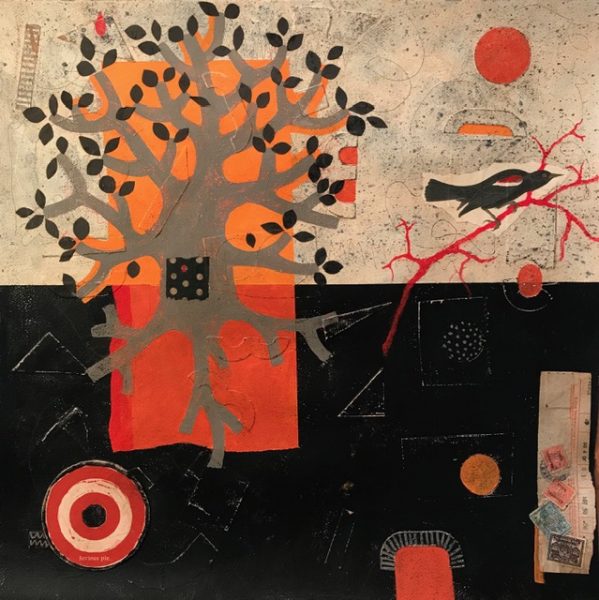
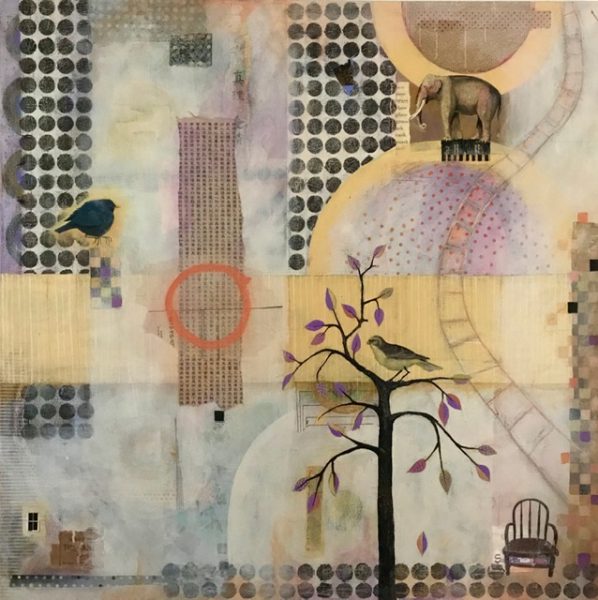
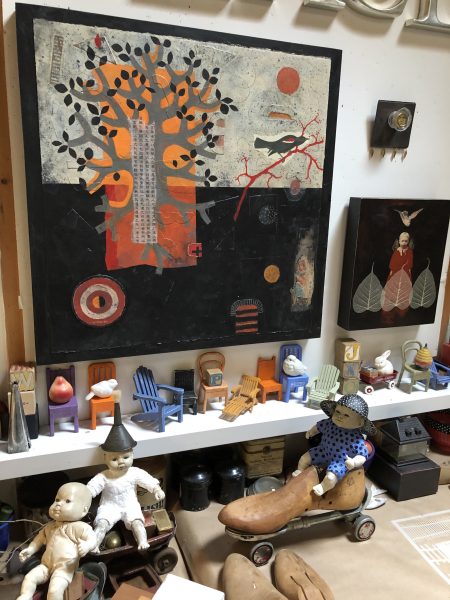
LH: So, looking ahead what do you see?
DH: Well, as I mentioned earlier, I’m making a body of work. Right now I’m taking things a day at a time. I’m creating more 2-dimensional work but I still need to balance it with assemblage. I have several projects in the studio, which is big enough that I can work on several things at the same time. So, that’s a blessing. I’m not concerned how big the work will be. I’ll know when and how it’s going to enter into the world. I have a whole series with the roller-skates and the wooden shoe forms right now and some other things – 20 pieces that are going to come out of that. I’m just excited about whatever unfolds. I’m excited about every picture that I paint, every piece that I start – it’s just fascinating to me.
LH: Any idea how you are going to sell your art at this time?
DH: I’d like to start a website where I can sell my art. For a lot of my friends, that’s how they’re selling their art. I’ve sold some things by posting them on Facebook or Instagram. People will ask: “Is it for sale?” But I haven’t made a concerted effort. Between savings and retirement, social security and having my mortgage paid off, I’m very blessed. But I still need to sell my art every once in a while. I can’t spend my time worrying about money. I always feel like I will be taken care of, which I have been for a few decades now – one way or another. I never want to go back to working a ‘real’ job. I want to devote my life just to being able to be creative and that’s it.
LH: What’s the best way to get a hold of you?
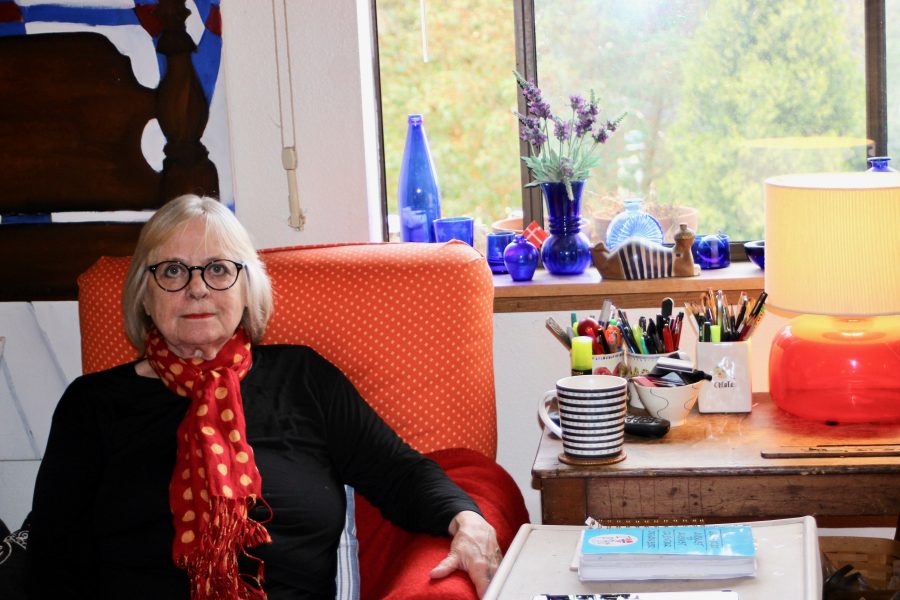
ABOUT LONE HANSEN. Lone is an artist who has owned several galleries in San Francisco, Seattle, and Bainbridge Island. She currently lives in Poulsbo where she is a member of the Poulsbo Arts League. During this pandemic and through her interactions with fellow artists, Lone has been creating art, gaining daily inspiration, cooking, and is taking care of dogs again. “I like this new normal,” she said. “It’s good for me – it is.” Lone has been “downsizing” her entire life – not just her studio, but her “whole life.” “It’s good to remember a life well lived,” she reflected. “Never boring, and it’s got me to where I am today.”